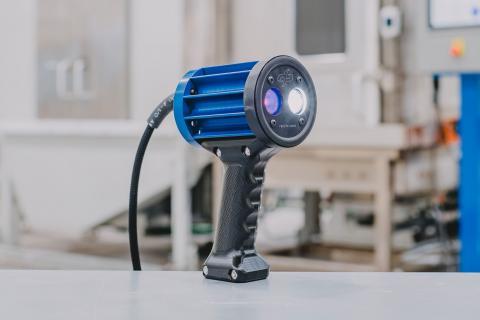Magnetic particle inspection is a type of non-destructive testing that is used to detect cracks in parts made of ferromagnetic materials.
Magnetic Particle Inspection (MPI) or Magnetic Particle Testing (MPT) is a non-destructive testing process that is used to detect cracks in parts that are made out of magnetic materials such as iron, nickel, cobalt, and alloys. The magnetic material is often referenced as ferromagnetic, which means it has a high susceptibility to magnetization. Magnetic Particle Inspection is the process of using a magnetic field to determine where a crack may be on a part.
MPI is a very sensitive test method and can be a quick way to determine if a part has a crack. It is typically used on forgings, castings, fasteners, weldments, machined, or stamped parts.

The Steps of Magnetic Particle Inspection:
- Surface of the part is cleaned.
- Magnetic Field is applied to the part.
- Iron particles are applied and gather at cracks where the magnetic field is ‘leaking’ from.
- Inspection and documentation of cracks on the part.
Magnetic Particle Inspection can be done on a product that is dry or wet. Wet fluorescent magnetic particle inspection is used to detect very fine defects. In the inspection process, LED UV-A lamps are used to help view the magnetic particles gathered at the surface of the cracks on the part.

LED UV-A Inspection Lamps for MPI
REL provides LED UV-A Inspection Lamps for FPI and MPI inspection testing. REL’s Inspection Lamps are available in corded, battery-powered, or overhead for booth lighting.
Specifications of our Mag Particle Inspection Lamps:
- Tested & complies with ASTM E3022 Standards
- Tested & complies with Rolls-Royce RRES 90061 requirements
- Meet specifications of ISO 3059
- Serialized certificate of conformance
- Refurbishable, service as needed
- 2-year warranty
Learn more about our LED UV-A Inspection Lamps.